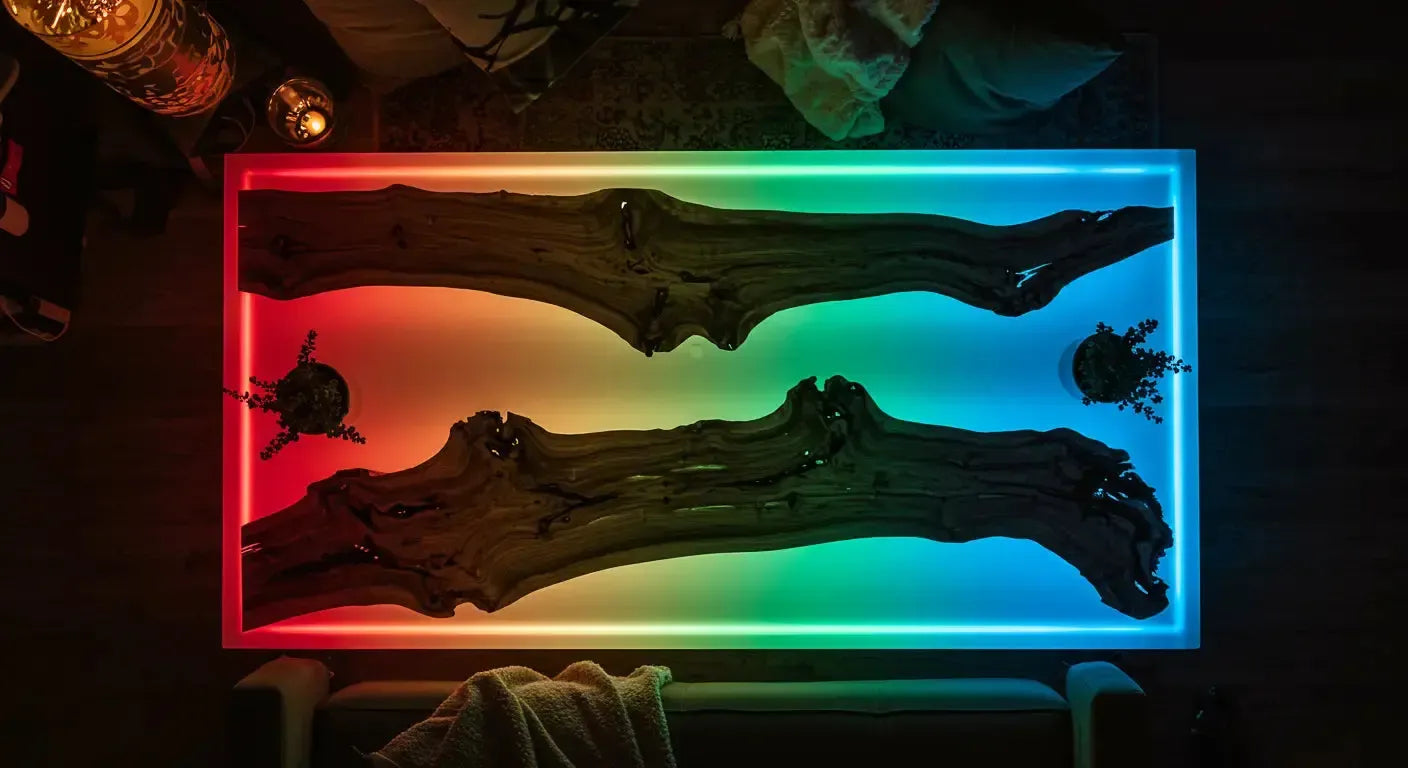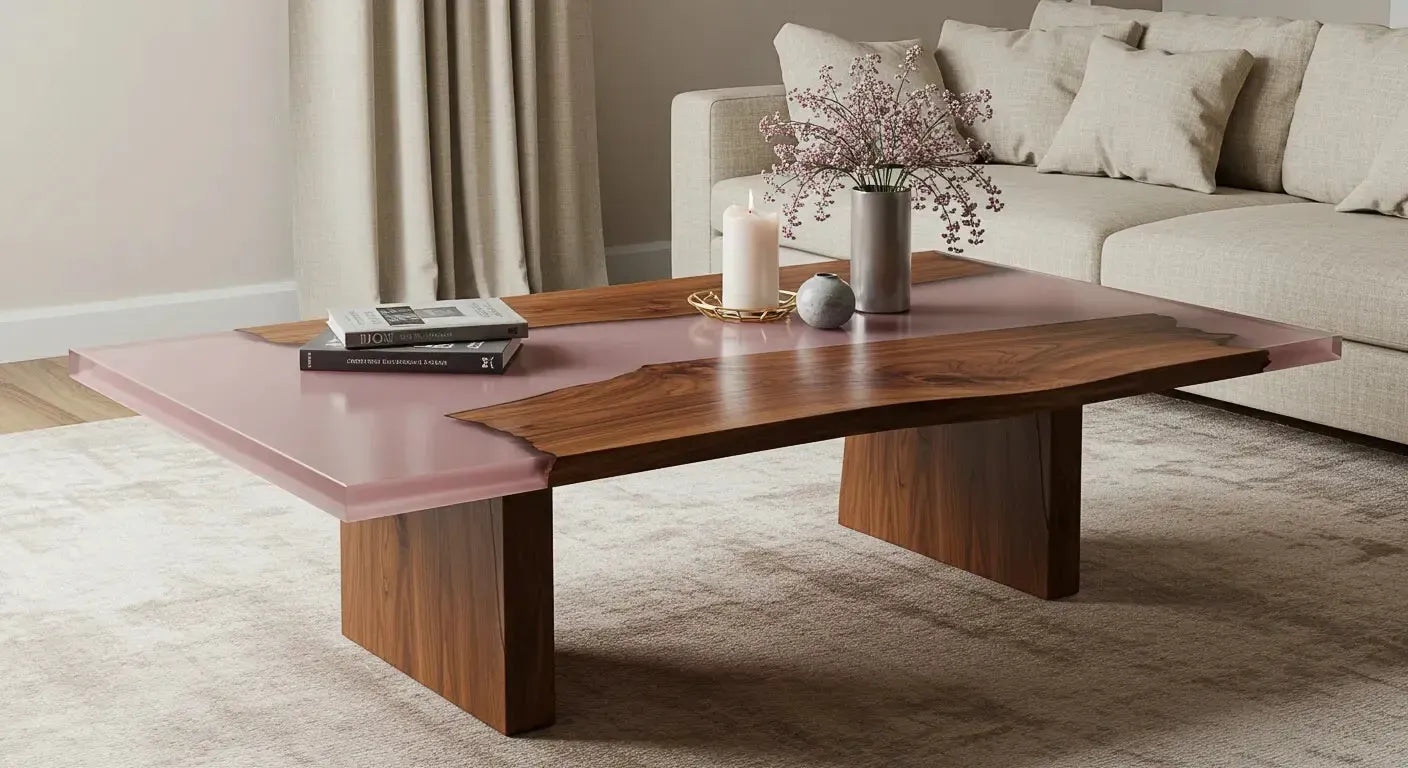Some builds are subtle. Others are just for fun. But every now and then, a project comes along that makes you step back and think, Okay… that actually turned out cooler than I expected. That was the case with the epoxy table I built with Waterproof LED lights. I’d seen glowing river tables floating around online. Some looked great. Others looked like a college dorm experiment gone wrong. I figured I’d try it myself and see if I could make something bold without crossing into gimmicky. It worked. And I’d do it again.

Why I Even Tried It in the First Place
I wanted something that didn’t just sit in the room — I wanted it to glow
I build a lot of statement tables. But this one? I wanted it to have presence, especially at night.
I’d seen some viral glowing tables and figured I’d give it a shot
There are plenty of LED epoxy tables out there—but most of them are either too loud or too literal. I wanted something more ambient.
It felt like the kind of wild idea that could either be genius or totally cringe. But I’m glad I went for it.
Where I Put the Lights (And What It Changed)
Under the table — soft glow against the floor
This created a floating effect that completely changed how the table sat in the space. Subtle during the day, but moody and modern once the lights go down.
Inside the river channel — backlit epoxy
When I turned the lights on, the resin came alive. Pigments, swirls, and textures that barely showed in daylight suddenly stood out.
Edge lighting — subtle but dramatic
This worked best with clear epoxy edges. It’s the kind of light you don’t notice right away, but once you do, it changes the entire room.

What Worked (And What I’d Do Differently Next Time)
The glow effect is unreal at night — way better than I expected
There’s a depth and movement to the resin when it’s lit from within that you just don’t get with natural light.
Hiding wires was the hardest part
This part took the most planning. Routing channels, hiding battery packs or plug-ins—it’s doable, but you have to think ahead.
I’d use dimmable LEDs next time
Full brightness looked great for photos but felt too intense in a darker room. A dimmer makes the whole thing more flexible.
Clear vs tinted epoxy: how it affects the glow
Clear resin lets the light spread out evenly. Tinted resin creates more drama, but it can block light depending on the pigment.
Ideas You Could Steal From My Setup
Use warm white LEDs for a softer, cozy feel
Great for reading nooks, living rooms, or anywhere you want ambient lighting without harsh glare.
RGB strips if you want party mode
Color-changing lights aren’t for everyone, but when done well, they add a fun, modern twist—especially in media rooms or bars.
Motion sensor or remote-controlled strips
Being able to switch the lighting on with a remote or motion sensor is underrated. It adds that little bit of extra "wow" factor.
If I had guests coming over, I’d just hit the remote—and boom. Instant mood lighting.

Final Thoughts: LED + Resin = Magic (If You Keep It Tasteful)
It’s easy to go overboard — but done right, it’s stunning
This isn’t about flashing lights or gimmicks. It’s about using light to bring out what’s already in the wood and resin.
Mine still feels like something out of a sci-fi lounge
But somehow it still fits in a warm, grounded space. That balance is what makes it work.
It’s one of the pieces I get asked about the most
Not just because it lights up—but because it still feels handcrafted, intentional, and unique.
Pot
Want Something Like This? Let’s Make It Happen
I take custom orders — we can build your glowing table from scratch
Whether you want a soft under glow, bold river channel lighting, or edge lighting that shifts color, I can help you make it happen. Just leave a comment or send us a message! Have a blessed day.








Share: